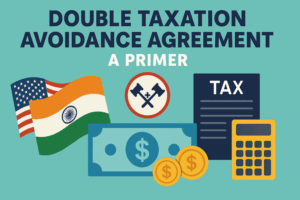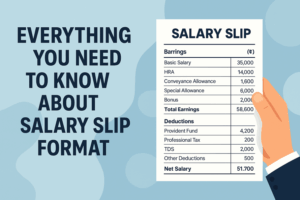
Most countries use fiat money as their primary currency. Consumers value it because they have faith in the government that issues the currency. So, first, understand what fiat money is. A government declares a specific currency to be legal tender, so it is accepted as a form of payment.
The cash you hold in your pocket is referred to as fiat money. Unlike commodity money, fiat money cannot be traded for a specific amount of something physical. Supply, demand, and the economy’s general health impact its value.
Fiat Money Explained: Definition and Core Principles
Want to know what is fiat money? Fiat currency is a type of money provided by a government supported by no physical items, such as gold or silver. Trust in the government and economy is what makes it worthy. The central bank manages how much money is in circulation to keep both inflation and economic stability in check.
What Makes Fiat Money Different from Commodity Money?
Fiat money is distinct from commodity money. Gold coins have intrinsic worth. Paper bills and other forms of fiat money have no other function apart from being money. The usefulness of money depends on people’s willingness to exchange it for goods and services.
Why Fiat Money Has No Intrinsic Value
No real asset is behind fiat money, which means it has no actual value. A ₹500 note is made of ordinary colored paper. It is valuable because we think we can trade it for goods. This trust is needed to keep the system working.
Key Features of Fiat Currency Systems
Fiat money has substituted the barter system. It enables people to purchase products and services. The performance of the economy sets the value of its currency.
Legal Tender and Government Backing
A government regulation defines legal tender as fiat money. Therefore, it should be viewed as an acceptable form of payment for all types of transactions. The authority given to it by the state is what keeps it valuable, not any intrinsic merit.
Central Bank Control and Supply Management
Central banks manage the fiat currency supply, inflation, interest rates, and liquidity through monetary policy. This enables the economy to handle changes and continue to develop steadily.
Role in Credit Creation and Modern Banking
There is no doubt that modern banking systems rely on fiat money. It permits credit to be created by fractional reserve banking. Banks provide funding to many users, thereby encouraging economic growth. To understand modern economies, you should first learn what is fiat money.
A Brief History of Fiat Money
Tangible national assets do not back fiat money. Trust is the driving force behind its value, which is solely determined by supply and demand.
Early Examples: From China to Colonial America
Fiat money has been around for a long time. In the 11th century, the Song Dynasty in China brought out paper money for the first time. Centuries later, the colonies in America began using fiat money to support wars and international trade.
The Rise of Modern Fiat Systems Post-1971
At the beginning of 1971, the United States had just enough gold to cover only one-third of its debt in dollars. In August 1971, President Nixon decided to end the process of using dollars to claim gold. As a result, the Bretton Woods system collapsed, and the dollar became a fiat currency. In 1973, the leading currencies were allowed to float freely and were no longer tied to the gold standard.
The End of the Gold Standard and the Birth of the Current Monetary Era
The practice of the gold standard was ended in 1971 by President Nixon, who made it possible for dollars not to be traded for gold. Credit policy and money supply management became the job of central banks. Although flexibility increased, so did the possibility of inflation. It established today’s worldwide monetary and economic structure.
How Fiat Money Works in the Economy
The old barter system was replaced by fiat currency, which facilitates transactions and is a medium for storing purchasing power. This enables individuals and companies to participate in specialized economic activities and make effective long-term plans.
Money Creation: Central Banks and Commercial Banks
Fiat money is introduced into the economy by central banks by issuing currency and managing interest rates. Central banks control the money supply by managing monetary policy. Lending is another way commercial banks help circulate money in the economy. While banks disburse loans, they also receive new deposits, which provides them with money to lend.
Theoretical Models: Why People Accept Fiat Currency
Asking what is fiat money also brings us to the question of why people trust it. With some research, it becomes clear that trust and legal support are essential. People accept fiat money because they trust others to accept it, too. Faith in the currency is built by government rules, steady inflation, and operational institutions.
Digital vs. Physical Money in Today’s Systems
Both digital and physical modes of fiat money exist now. Most of the transactions these days are processed electronically in various ways. Physical cash is still prevalent, but not as frequently as it was before. Digital fiat enables individuals and businesses to make quick payments, boosting global trading and highlighting its significant role in the current landscape.
Advantages and Disadvantages of Fiat Money
It was created to offer a new option to commodity money and relies on the government for its value, which is influenced by changes in other parts of the economy and society.
Benefits: Policy Flexibility, Growth, and Practicality
An important advantage of fiat money is that it allows governments to make economic decisions. Governments use central banks to manage the money supply, aiming to keep inflation under control or stimulate the economy. Fiat money enables banking activities to function efficiently and trading to proceed smoothly.
Risks: Inflation, Devaluation, and Government Mismanagement
Printing too much fiat money can make it lose value. That leads to inflation and reduces the value of the currency. If the government loses people’s trust, the money loses its value. Political problems or a lack of prudent financial policies can make the currency weaker.
Case Studies: Hyperinflation in Zimbabwe, Venezuela, Weimar Germany
In hyperinflation, money rapidly becomes worthless, and the prices of goods surge uncontrollably. Many memorable events demonstrate the devastating impact of war. Reparations imposed after World War I led to hyperinflation in Weimar Germany, and by 1923, the Papiermark had become practically worthless. The Rentenmark became the new currency, and 1 trillion old marks were exchanged for each new mark.
There was a similar crisis in Zimbabwe from 2007 to 2009, when they stopped using the local dollar currency and adopted foreign coins and notes instead. Over the past few years, Venezuela’s economy has deteriorated due to ongoing hyperinflation, prompting the government to regularly reprint and revalue its currency to prevent prices from rising.
Fiat Money vs Crypto: What’s the Difference?
Understanding the distinction between fiat money and crypto is essential for anyone in the digital economy. In brief, official paper currency is not supported by a real resource such as gold. Blockchain technology is the underlying technology behind digital assets such as crypto.
Centralized vs. Decentralized Systems
The production and regulation of fiat money depend on central banks and governments. A crypto asset is any asset that is issued or transferred using distributed ledger technology (DLT) or blockchain technology.
Government-Backed Value vs Market-Driven Value
Fiat money is valued because the government recognizes and makes it legal tender. The worth of a crypto asset increases when demand exceeds supply and users trust it. Since Bitcoin is generated in limited quantities, it impacts its value.
Coexistence in the Modern Monetary Landscape
The two systems are working side by side. Official currencies are still needed for stability, but crypto helps with new ideas and cross-border transactions. Comparing fiat money to crypto becomes easier if you understand what is fiat money.
The Future of Fiat Money in a Changing Financial World
It is important to understand what is fiat money, which has stood at the core of modern economies for a long time. However, due to fast digital advancements, its future is uncertain. There is a chance that fiat money will become less important as technology advances.
Digital Currencies and Central Bank Digital Currency (CBDC) Trends
Governments are exploring Central Bank Digital Currencies (CBDCs) to modernize the monetary system. CBDCs are regulated by central banks, whereas Bitcoin is not. They allow payments to be processed more quickly, keep track of everything, and allow everyone to participate in the financial world.
Institutional Trust and Public Confidence in the Digital Age
Fiat money relies on people’s trust in central banks and governments. Today, people are concerned about privacy, online crime, and transparency due to technological advancements. When people become unsure about the system, they may seek alternative options.
What Could Replace Fiat Money?
With the rise of crypto assets, stablecoins, and systems built on blockchain, they are becoming strong contenders in the payment world. They are not entirely mainstream as yet, but financial innovation challenges the traditional use of money.
FAQs
1. What is fiat money, and how is it different from gold-backed currency?
The government issues fiat money, which lacks intrinsic value, such as gold or silver, to support it. Its strength is based on the promise guaranteed by the government issuing it.
2. Why does fiat money have value if it’s not backed by anything?
People believe in the government and its economy, which gives fiat money its value.
3. What are the pros and cons of fiat money?
Having a fiat money system makes economic management and money supply more adjustable, which helps modern economies. However, if the government cannot manage the economy well, it may result in inflation or devaluation when people lose trust in it.
4. Which countries use fiat currency today?
Almost all countries in the world use fiat currency.
5. Can fiat money lead to inflation or economic collapse?
The major drawback of fiat money is its vulnerability to fan inflation. It can be printed as much as governments wish to print it. It is because fiat currency is not tied to any commodity of value. This could lead to a debt-inflation cycle that could cause bubbles in the economy.
6. How is fiat money created?
Fiat money is issued by a government and is not backed by any commodity, such as silver or gold. But instead, it is based on the authority of the government. It is valuable because people have confidence in the government printing it and a balance between how much they supply and demand it.
7. Is crypto a type of fiat money?
Crypto is not treated as fiat money. Fiat currency is regulated by governments. Crypto is digital by nature, created and stored electronically on the blockchain.
8. What ended the gold standard and led to fiat systems?
To suspend the dollar’s convertibility to gold, US President Richard Nixon ended the gold standard and led to fiat systems on August 15, 1971. This action was referred to as Nixon Shock and phased out the Bretton Woods system.
9. What is the future of fiat currency in a digital economy?
Digital advances are causing fiat money to adapt. Central banks are studying the feasibility of CBDCs to speed up transactions, cut down on costs,, and remain relevant in a increasingly cashless world.







